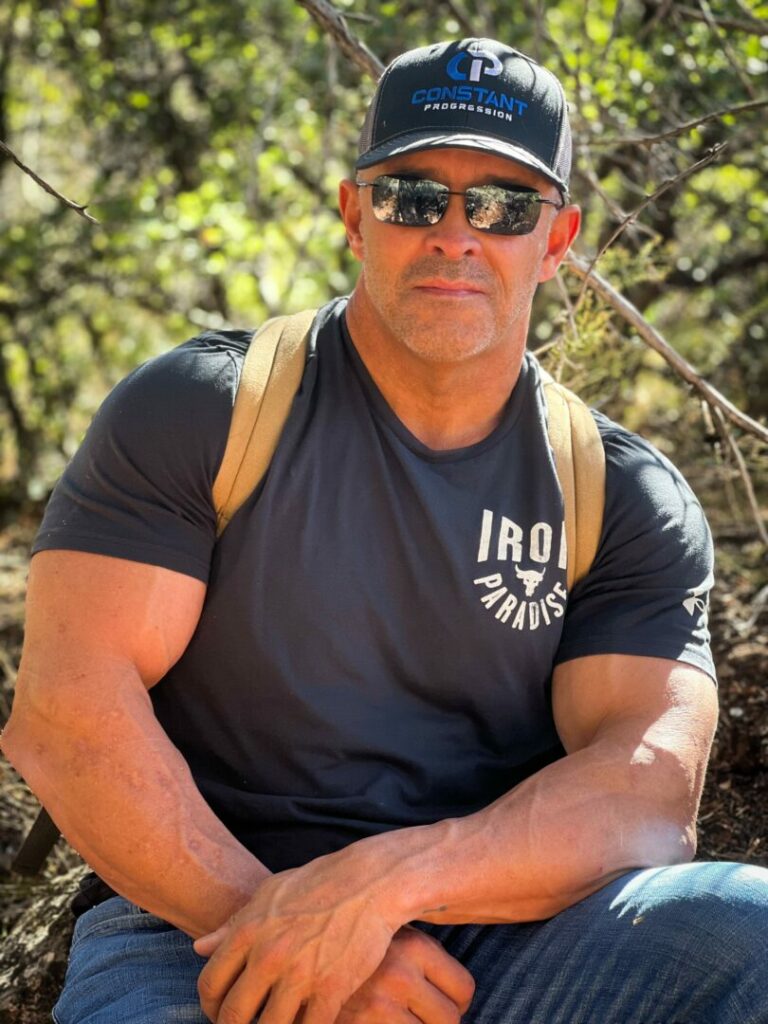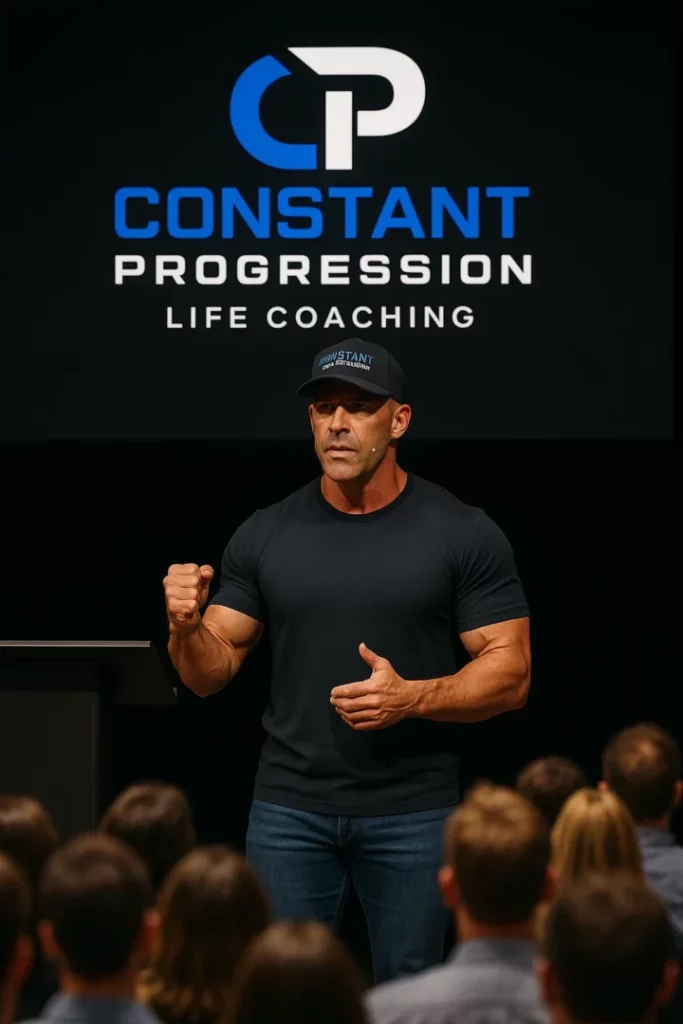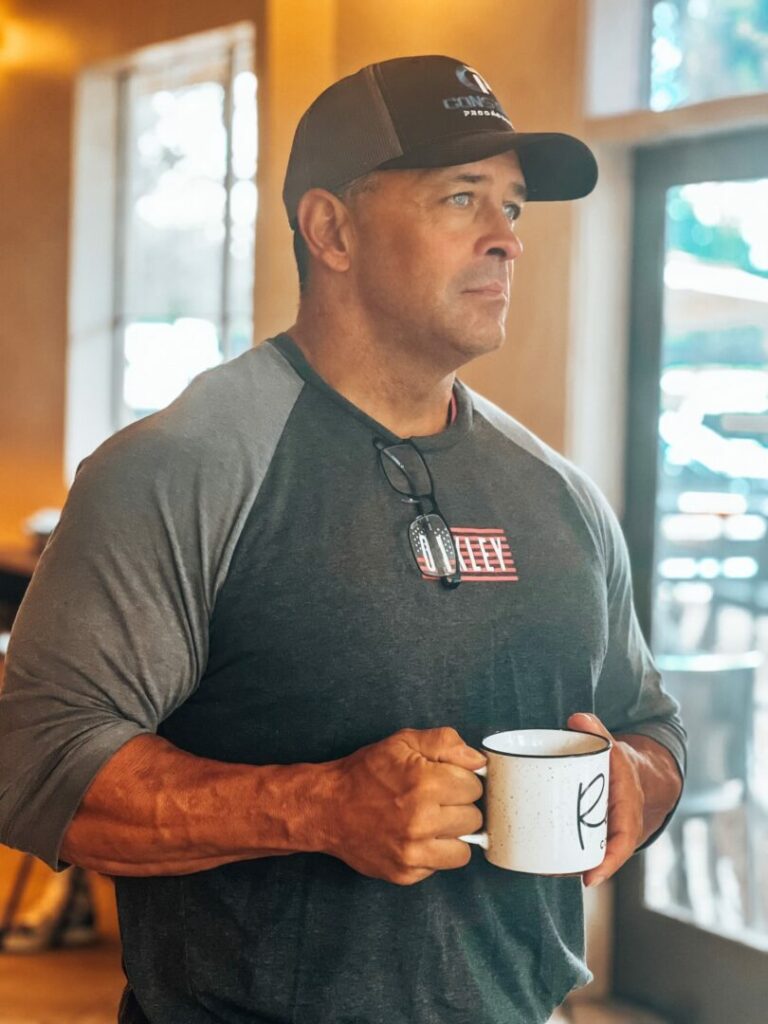Russ Hosmer, USMC Veteran & Founder of Constant Progression
Description
Russ Hosmer, a U.S. Marine Corps veteran, certified life coach, former national-champion bodybuilder, and founder of Constant Progression, an online life coaching and personal development platform serving clients worldwide, joins Discover Lafayette to discuss his mission to help others reach their full potential.
Russ grew up in New Jersey, just outside of New York City. At 17, his parents retired and moved to Alabama. He studied at Jacksonville State University and worked in health club turnarounds: “We found the gyms and the health clubs that were in the red, and we brought them into the black. We got the management together, the business side of it, and got them better and rolling.”
Russ was a bodybuilder alongside business: “I was a state champion when I was a teenager… top five in the national championship. I was a national champion twice. Two times. Two years in a row as the first one to ever do that.” That era cemented discipline: “I was blessed. I was doing what I love… when you do that, you don’t ever work a day in your life.”
<figure class="wp-block-image size-full">
 </figure>
</figure>Choosing the Marines, Special Operations, and What Service Really Looked Like
“My family is Marine Corps. My grandfather was a WWII veteran and my brother was a Marine… it was almost like, well, I have to do that.” He enlisted on a whim, calling it “probably the greatest decision of my life.”
Boot camp at Parris Island: “They start drilling leadership principles into you the day you get there… It’s a transformation process. It’s the title,, being a Marine. So you have to earn it.” After graduating top of his class in the School of Infantry, he went to amphibious reconnaissance / special operations: “We’re like 1% of the Marine Corps.”
Operational reality: “Less than 1% of the Marine Corps see combat. We do more hospitable missions than we do combat missions. It’s urban warfare, small unit tactics. We don’t actually fight other countries like uniform military. it’s a different world we live in.” He traveled extensively: “I was in 37 countries in three years. I was deployed a lot. But I volunteered because that’s what I wanted to do.”
PTSD, Loss, and a Five-Year Turning Point
Russ is candid: “I do have severe PTSD… I didn’t know I had it for years. Then all of a sudden, it was really bad.” Compounding events:“I lost my corporate job during COVID. I had been a senior executive of a Fortune 500 company for twenty years. Then my dad died, and my mom died, then my older brother died.” It left him “in a very dark place, kind of lost.”
<figure class="wp-block-image size-full">
 <figcaption class="wp-element-caption">“I decided, you know what? I need to help people overcome the PTSD, get the resilience and the mindset, and learn how the mind works and how the body works. And why is this happening?”</figcaption></figure>
<figcaption class="wp-element-caption">“I decided, you know what? I need to help people overcome the PTSD, get the resilience and the mindset, and learn how the mind works and how the body works. And why is this happening?”</figcaption></figure>On the rate of veterans committing suicide, Russ says, “They say it’s 22 a day. There’s a lot more than that. They don’t have help, they think it’s a sign of weakness. But you admitting it and talking about it, that’s a sure sign of strength.” From a five-year journey, he created Constant Progression: “We’re always looking to be our best self. We’re all on that journey of constant progression.”
Training the Marines & A Vanderbilt Recovery Study That “Changed Everything”
After instructing at Marine Corps Recruit Depot Parris Island, Russ became a Physical Training Advisor for the Eastern Recruiting Region—“anything east of the Mississippi River… the whole East Coast.” His remedial programs “went before Congress and they actually enacted those into standard operating procedures… now a part of the Marine Corps training standards.”
Russ helped run a muscle recovery study with Vanderbilt University to reduce injuries and attrition: “We had a lot of lower body extremities’ injuries, especially with the female recruits… hip fractures and femur fractures, tibia fractures… kids nowadays… they don’t eat well.” Findings touched hydration, chow hall practices, food quantity by body weight, and training tweaks (including pull-up progression): “The best way to get better at pull ups is… do pull ups.” The study’s impact: “It changed everything… there’s a lot of moving parts.”
He also outlines cost-intensive reassignments that were utilized for rehabilitation: Medical Rehab Platoon, Physical Conditioning Platoon, and retrain—and why prevention mattered: “That costs a lot of money… so that’s what spiced out the whole muscle recovery study to help keep troops healthy.”
Private Sector: Biomechanics Lab, Pixar-Style Motion Capture, and Human-Centered Equipment
Recruiters pulled him to Life Fitness/Hammer Strength: “We were the largest. We set the standard for how fitness was developed.” Their $2M biomechanics lab used the “same technology as Pixar” to map motion with reflective markers: “We would mimic their movements… make the equipment… in alignment with how people move.”
Design philosophy: “Hammer Strength is built from the center outward… built around you.” On anthropometrics and building the best fitness equipment: “Fit a machine to work between someone who’s five foot one and six foot nine.” He notes Shaquille O’Neal contributed to hamstring designs. Elliptical geometry matched natural gait to avoid hip shift and back issues.
Russ advised Nature Made Vitamins and Otsuka Pharmaceutical: “They were interested in my muscle recovery study… looking at a new vitamin line… in line with muscle recovery… and better hydration.” He references Pocari Sweat—“a hydration drink that mimics sweat”—and presenting in Japan: “You have to talk slow and you have to pause… nobody spoke English… they bring you gifts… I learned more about culture.” A memorable attendee: “She was a gold medalist in archery… an incredible athlete.”
Constant Progression: How Russ Coaches Adults & Professionals Worldwide
“I’ve been doing it since 2023. The constant progression name says it all because we’re always looking to be better. We’re always looking to be our best self some kind of way. The constant progression term was a term that I had back before the Marine Corps. I had constant progression. When I was training in the Marine Corps, writing programs and training programs and standard operating procedures for the Marine Corps, I always used the term constant progression because it was so powerful to me. We’re all on that journey of constant progression.
Russ focuses on “mastering the mindset, building resilience, and achieving lasting transformation.” He focuses on structure: “One of the biggest pillars… without structure and clarity, you have chaos.” Clients commit to a morning routine, midday anchor, and evening routine—“non-negotiable.” Rule one: “Don’t reach for your phone” on waking: “You’re reacting to everybody else’s agenda.”
<figure class="wp-block-media-text__media">
 </figure>
</figure>“You have to control the day when you get up in the morning and not let the day control you. One of the biggest pillars I have in my program is structure, because structure gives you clarity. Wwithout structure and clarity, you have chaos. If you don’t have that in business, you’ve got chaos. You need to look at yourself as if you’re running a business. If you’re running a business, you want to run it efficient as possible. Why would you run yourself any differently? With all my clients, I drill them with structure. We have a morning routine, a midday anchor, and an evening routine. That’s non-negotiable.”
He prescribes solitude: “Sit outside with no phone. Around the 30 minute mark, your brain starts to go into a different brain; watch how clear you get.” On habit formation: “They say it’s 90 days… you chip at it… five, ten minutes at a time.”
“We do neuroscience backed habit change. That’s what transforms you. The biggest thing to do is to learn about yourself and create new habits. And when you create new habits, it makes new neural pathways in your brain. We have a lot of neural pathways that are already there from from our life, from our grown up life, but we can change it. It’s called neuroplasticity. You’re able to change your thoughts and become more intentional and more aware of who you are.”
Four Pillars (in his words)
- Structure → Discipline → Focus → Clarity.
“Discipline is the biggest bridge… When you get to clarity, you become very powerful… Clients have ‘aha’ moments; ‘who they’ve always wanted to be. We give them the tools to build that person.”
Anxiety, Depression, and the Present
“Anxiety is you anticipating the future… trying to control things that you can’t control.”
“Depression is living in your past… letting your past dictate today.”
So he “bring[s] them back into center… how to be present today.”
PTSD Program & Nervous System Balance
PTSD coaching targets th





